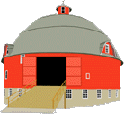SEGMENT: TRANSPORTATION, FAMILY, & NON-FARM WORK
Lou Ann Siburt>UIS Collection S>UIS Collection S, Segment 18
| <-Previous Segment | Next Segment-> |
- TRANSPORTATION
- Family first only had horses. Went to church in horse-and-buggy. Drove to Decatur with a team of horses and stopped to rest occasionally. Buggy had space to put groceries. Trips to Decatur took all day, so sometimes shopped in Cerro Gordo. Father bought Ford Model T in 1931-1932, but could only drive when gas and tires were available. Never owned motorized farm equipment. Bought a Hupmobile luxury car in 1939-1940. Mother decided to learn how to drive and get her license, which took a trip to Monticello to pay a dollar and sign your name. Bought a used Ford Model A afterwards.
- FAMILY
- Father got a job at Brownie Coal Compamympany in 1943 because farming was not paying enough. Mother wanted to move to Decatur where she grew up and own a modern house. Thinks working at Brownie was bad for father's health. Quit school at 14 because it was too expensive. Had to pay $10 for a school bus to take them to Cerro Gordo High, had to buy lunch and books. Worked as a nurse's aide at St. Mary's Hospital despite her age. Still not enough money to go to school. Sister got first job at Hayes Hatchery at 13, but it was dirty work.
- NON-FARM WORK
- Worked at St. Mary's for several months. Describes schedule. Made $17.50 every two weeks. Saved money and bought clothes and new shoes. Was very proud of new shoes. Best friend had job at St. Mary's and they rented a room together for a summer. Both had quit school. Landlady had a kitchen, bought food from the A&P store, and best friend brought food back from diet kitchen in hospital. Lived away from home for two months, then went home but kept working. Parents did not like her living away from home.

